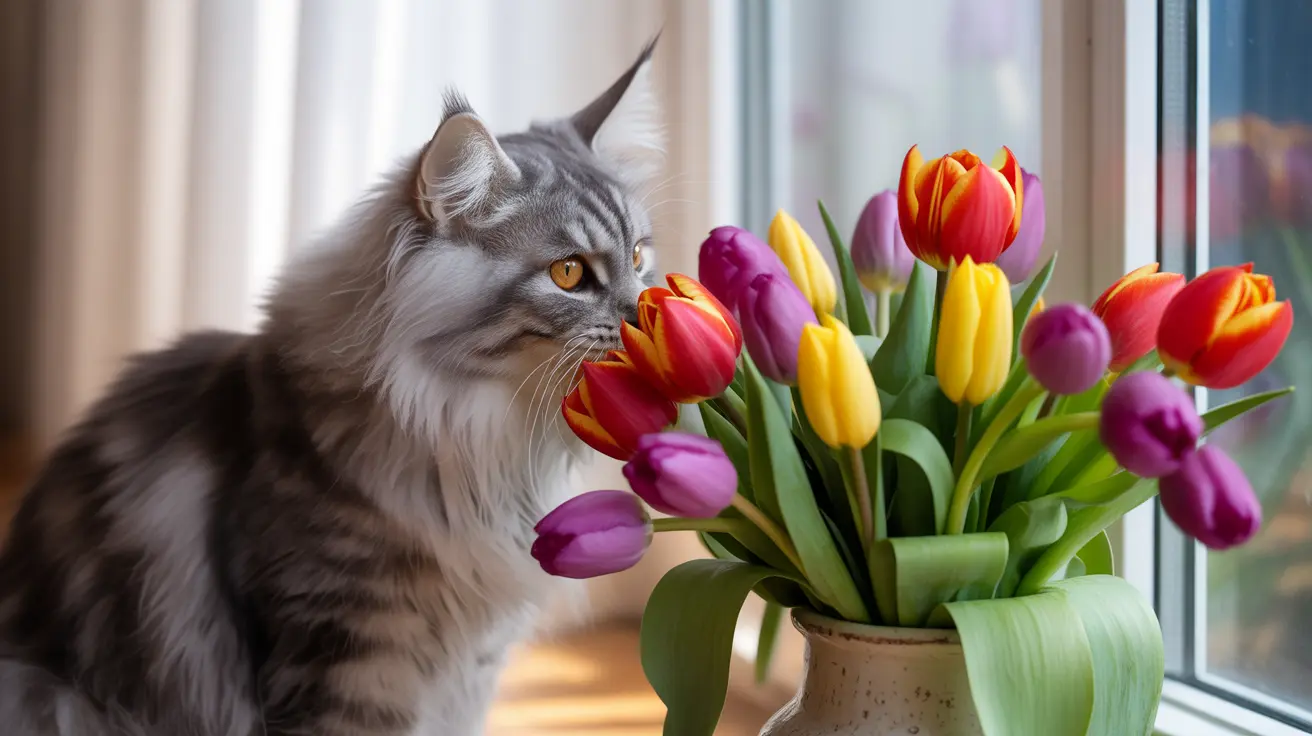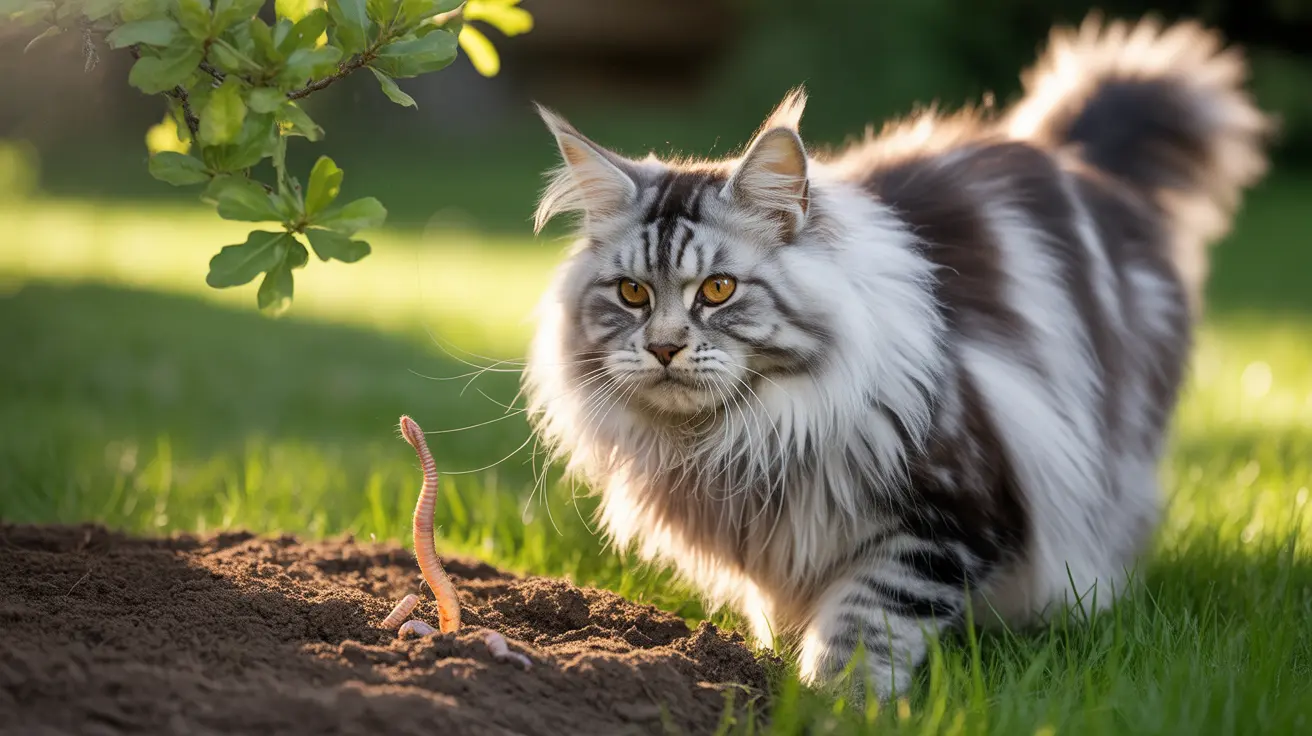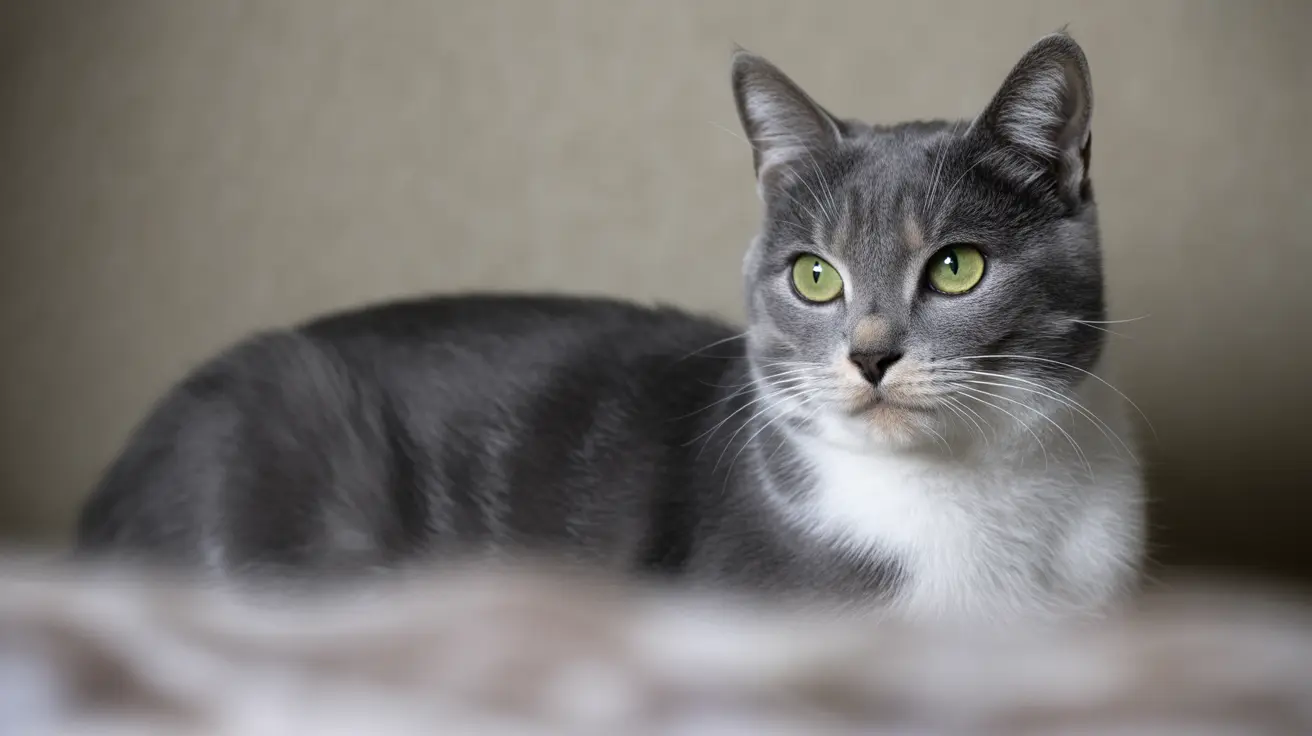Are Tulips Toxic to Cats? Essential Safety Guide for Pet Owners
Spring brings the joy of fresh blooms, and tulips stand as one of the most beloved seasonal flowers. However, if you're a cat owner who enjoys decorating your home with these vibrant flowers, there's crucial information you need to know. Tulips contain toxic compounds that can pose serious health risks to your feline companion, making it essential to understand the dangers and take appropriate precautions.
Understanding which flowers are safe and which are dangerous can mean the difference between enjoying beautiful blooms and facing a veterinary emergency. This comprehensive guide will help you navigate tulip toxicity in cats, recognize warning signs, and discover safe alternatives that allow you to maintain a beautiful, cat-friendly home environment.
Understanding Tulip Toxicity in Cats
Tulips belong to the Liliaceae (lily) family and contain dangerous glycoside compounds called tulipalin A and tulipalin B. These toxic substances serve as the plant's natural defense mechanism but can cause significant harm to cats when ingested. The toxicity affects cats differently than other animals, making even small amounts potentially dangerous.
All parts of the tulip plant contain these toxic compounds, though the concentration varies significantly throughout different sections. The bulbs contain the highest concentration of tulipalin A and B, making them the most dangerous part of the plant. However, the petals, leaves, and stems also contain enough toxins to cause poisoning in cats, especially in smaller or more sensitive animals.
How Tulipalin Affects Cats Biologically
When cats ingest tulips, the tulipalin compounds immediately begin irritating the mouth and esophagus upon contact. These glycoside compounds then move through the digestive system, causing inflammation and irritation throughout the gastrointestinal tract. The toxins can trigger both allergic reactions and systemic effects that impact multiple organ systems.
The biological impact extends beyond simple stomach upset. Tulipalin compounds can affect the nervous system, cardiovascular function, and respiratory system. This is why symptoms can range from mild gastrointestinal distress to severe complications including seizures, breathing difficulties, and potential organ damage.
Recognizing Symptoms of Tulip Poisoning
Early recognition of tulip poisoning symptoms can be life-saving for your cat. The severity and onset of symptoms depend on several factors, including the amount ingested, which part of the plant was consumed, and your cat's size and overall health status.
Mild to Moderate Symptoms
The most common early signs of tulip poisoning include nausea, vomiting, and diarrhea. You may notice your cat experiencing loss of appetite, excessive drooling (hypersalivation), and general lethargy or depression. These symptoms typically appear within hours of ingestion and indicate that the toxic compounds are irritating your cat's digestive system.
Additional moderate symptoms include loss of coordination, weakness, and visible irritation around the mouth and throat area. Your cat may paw at their mouth or show signs of discomfort when trying to eat or drink.
Severe Symptoms Requiring Emergency Care
More serious cases of tulip poisoning can produce alarming symptoms that require immediate veterinary intervention. These include increased heart rate, rapid or labored breathing, breathing difficulties, tremors, and seizures. Severe abdominal pain may cause your cat to assume unusual positions or vocalize in distress.
In the most serious cases, tulip poisoning can lead to organ damage and potentially fatal complications if left untreated. This is why immediate veterinary care is crucial whenever tulip ingestion is suspected, regardless of the apparent severity of initial symptoms.
Immediate Response and Treatment Options
If you suspect your cat has ingested tulips, time is critical. Contact your veterinarian or an emergency animal poison control center immediately, even if symptoms haven't yet appeared. Early intervention significantly improves the chances of a full recovery and can prevent more serious complications from developing.
What NOT to Do
Never attempt to induce vomiting at home unless specifically instructed by a veterinary professional. Home remedies can sometimes cause more harm than good, particularly if the cat has already been vomiting or if too much time has passed since ingestion. Avoid giving your cat milk, which won't neutralize the toxins and may worsen digestive upset.
Professional Treatment Approaches
Veterinary treatment for tulip poisoning focuses on supportive care and symptom management, as there is no specific antidote for tulipalin toxicity. If the ingestion was recent, veterinarians may induce vomiting under controlled conditions and administer activated charcoal to help absorb remaining toxins in the digestive system.
Treatment typically includes intravenous fluid therapy to prevent dehydration and help flush toxins from the body. For cats experiencing respiratory distress, oxygen therapy may be necessary. Veterinarians may also perform electrocardiograms to monitor heart function and prescribe medications to control specific symptoms like nausea or seizures.
Creating a Cat-Safe Home with Beautiful Flowers
You don't have to give up fresh flowers entirely to keep your cat safe. Understanding which blooms are toxic and which are safe allows you to create stunning floral displays without compromising your pet's health.
Dangerous Flowers to Avoid
Beyond tulips, several other common cut flowers pose risks to cats. Lilies are particularly dangerous and can cause kidney failure even from minimal exposure. Daffodils, hyacinths, chrysanthemums, eucalyptus, hydrangeas, and azaleas all contain compounds toxic to cats and should be kept out of homes with feline companions.
Safe and Beautiful Alternatives
Fortunately, many gorgeous flowers are completely safe for cats. Gerberas offer vibrant colors and long-lasting blooms, while roses (without thorns) provide classic elegance. Dahlias, sunflowers, daisies, snapdragons, and lisianthus all make excellent cat-safe choices for fresh arrangements.
For houseplants, consider cat-friendly options like orchids, African violets, spider plants, Boston ferns, and cat grass. These plants can satisfy your desire for greenery while providing environmental enrichment that cats actually enjoy.
Seasonal Flower Safety Guide
Different seasons bring various flowering plants, each with their own safety considerations for cat owners. Spring flowers like tulips, daffodils, and hyacinths are particularly problematic, while summer blooms often offer more cat-safe options.
Spring Safety Considerations
Spring bulb flowers pose the highest risk, as many contain concentrated toxins. If you have outdoor tulips, daffodils, or hyacinths, monitor outdoor cats carefully and consider fencing off garden areas. Indoor bouquets should focus on safe alternatives during peak bulb season.
Year-Round Prevention Strategies
Implement consistent safety measures regardless of season. Always research new flowers before bringing them home, keep arrangements out of reach, and provide alternative entertainment for curious cats. Cat grass and catnip can redirect your pet's attention away from potentially dangerous plants.
Training and Deterrent Strategies
While you can't completely train a cat's natural curiosity out of them, you can implement strategies to reduce their interest in potentially dangerous plants and flowers.
Environmental Management
Place flower arrangements in areas your cat cannot easily access, such as high shelves or rooms that can be closed off when you're not home. Use hanging planters for safe plants, and consider decorative barriers around floor-level arrangements.
Providing Alternatives
Cats often nibble on plants due to dietary needs or boredom. Provide cat grass, catnip, or other safe plants specifically for your cat to explore. This can satisfy their natural urges while keeping them away from dangerous flowers.
Recovery and Long-Term Care
Most cats who receive prompt treatment for tulip poisoning recover fully, though the timeline depends on the amount ingested and the severity of symptoms. Mild cases may resolve within 24-48 hours, while more severe poisoning can require several days of supportive care.
During recovery, follow your veterinarian's instructions carefully. This typically includes feeding a bland diet to allow the gastrointestinal system to heal, restricting activity to promote rest, and monitoring for any recurring or worsening symptoms. Follow-up veterinary visits may be necessary if complications arise or symptoms persist longer than expected.
Frequently Asked Questions
- Can cats be poisoned by tulip vase water?
Yes, the toxic compounds tulipalin A and B leach into vase water, making it dangerous for cats to drink. Always keep flower arrangements with tulips completely inaccessible to cats, including the water.
- Are some tulip varieties safer than others?
No, all tulip varieties contain tulipalin A and B compounds. While toxin concentrations may vary slightly between varieties, no tulips should be considered safe for cats.
- How quickly do symptoms appear after tulip ingestion?
Symptoms typically appear within a few hours of ingestion, though the exact timeline can vary based on the amount consumed and your cat's individual sensitivity. Some symptoms may appear almost immediately, while others may take several hours to develop.
- Can outdoor cats safely be around tulips in the garden?
Outdoor cats are generally at lower risk because they're less likely to consume significant amounts of tulips. However, monitoring is still important, especially during spring when bulbs may be more accessible due to digging or garden maintenance.
- What should I do if my cat only licked a tulip petal?
Even minimal contact can cause irritation and mild symptoms. Contact your veterinarian for guidance, especially if you notice any changes in behavior, eating habits, or signs of mouth irritation.
- Are tulip bulbs more dangerous than other parts of the plant?
Yes, tulip bulbs contain the highest concentration of toxic compounds. However, all parts of the tulip plant contain enough toxins to cause poisoning, so no part should be considered safe.
- Can pet insurance help with tulip poisoning treatment costs?
Most pet insurance policies cover emergency treatment for accidental poisoning, including tulip toxicity. Treatment costs can be significant, so insurance can help mitigate the financial impact of emergency veterinary care.
Conclusion
While tulips are undeniably beautiful, their toxicity to cats makes them unsuitable for homes with feline companions. Understanding the risks, recognizing symptoms, and knowing how to respond can protect your cat from serious harm. The key is prevention through education and careful plant selection.
By choosing cat-safe alternatives and implementing smart safety strategies, you can maintain a beautiful, flower-filled home without compromising your pet's health. Remember that when in doubt, always consult with your veterinarian, and never hesitate to seek emergency care if you suspect your cat has ingested any potentially toxic plant material.






